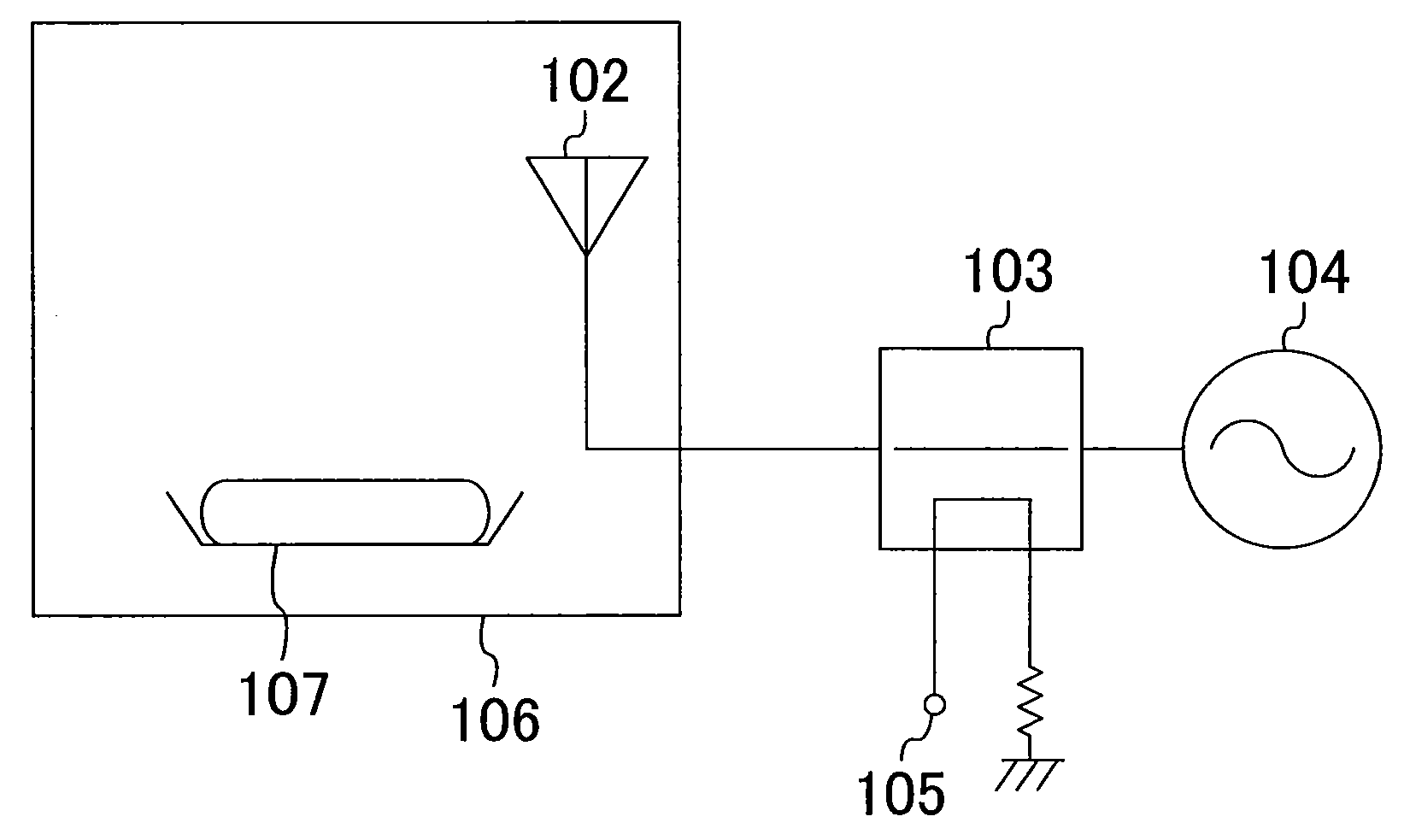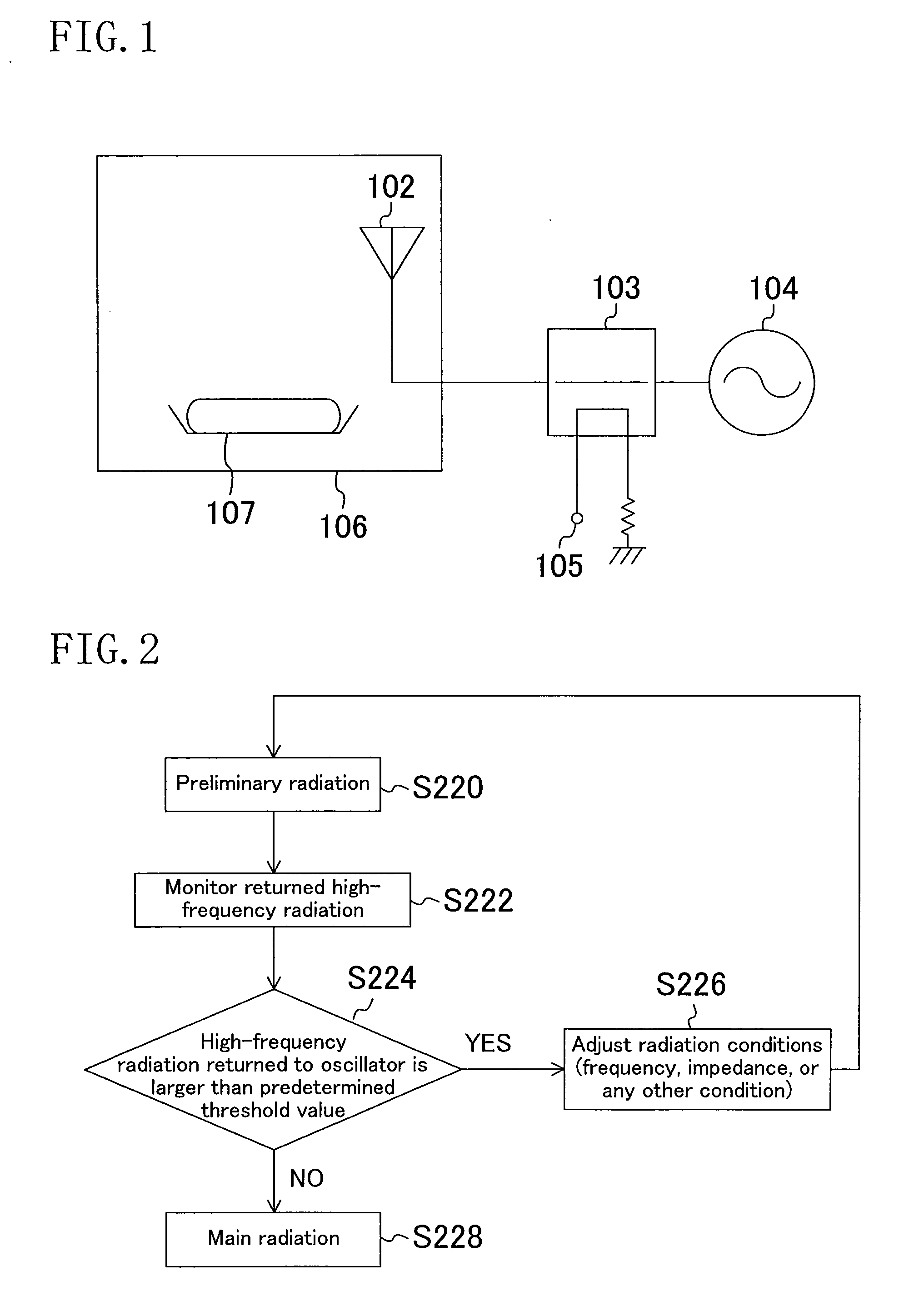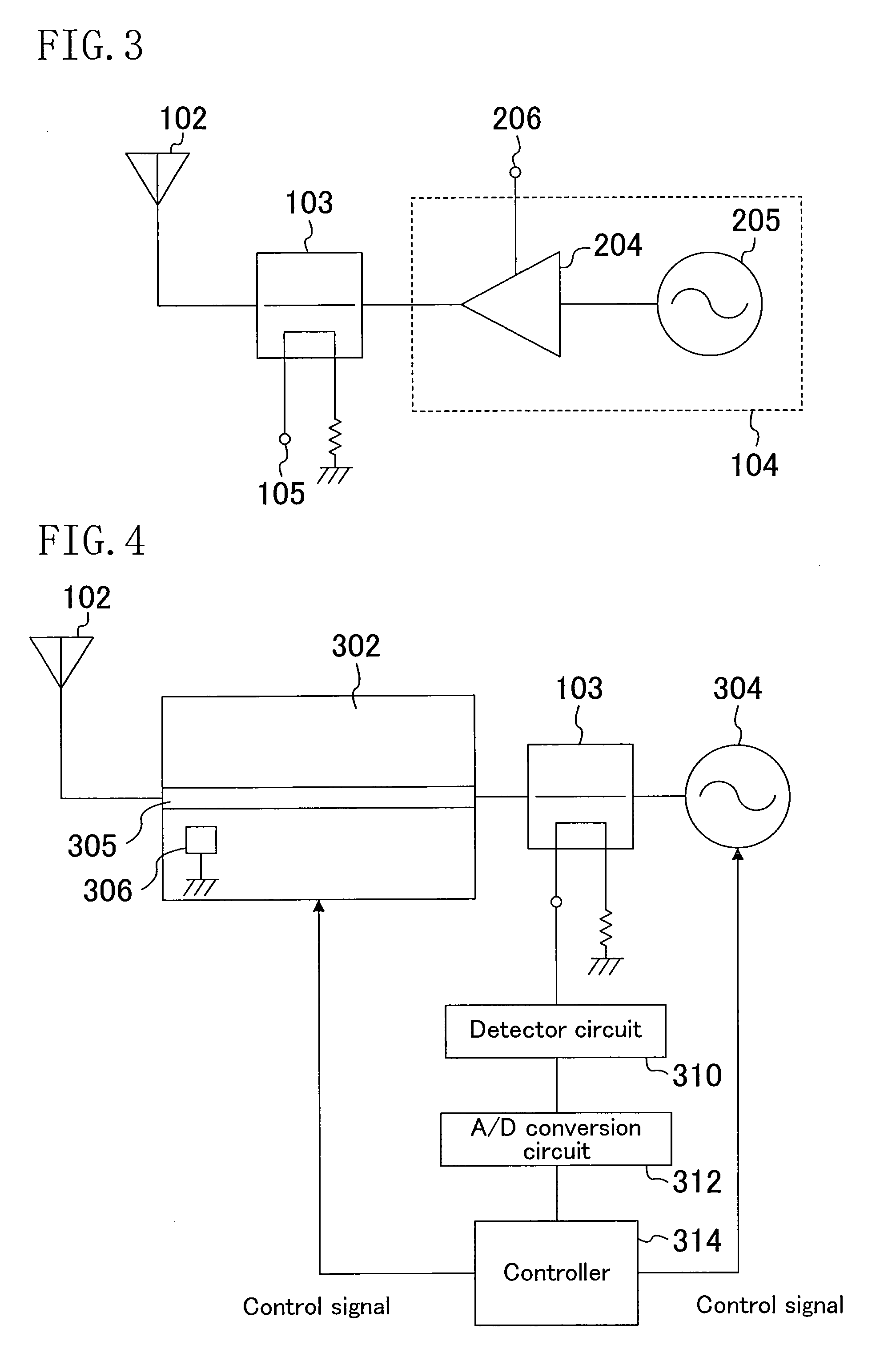Method for controlling high-frequency radiator
a high-frequency radiator and control method technology, applied in the direction of electrification characteristics varying frequency control, electrical/magnetic/electromagnetic heating, sustainable buildings, etc., can solve the problems of very likely to be broken and extremely likely to be broken, so as to improve the operation reliability of the high-frequency radiator and prevent overheating of the solid-state oscillator
- Summary
- Abstract
- Description
- Claims
- Application Information
AI Technical Summary
Benefits of technology
Problems solved by technology
Method used
Image
Examples
embodiment 1
[0032]FIG. 1 is a diagram schematically illustrating the basic configuration of a high-frequency heater according to a first embodiment of the present invention. As illustrated in FIG. 1, the high-frequency heater of this embodiment includes a solid-state oscillator 104 for generating a high-frequency radiation, a directional coupler 103 for transmitting the high-frequency radiation generated by the solid-state oscillator 104, a heating chamber 106 for accommodating an object 107 to be heated (hereinafter, referred to as a “to-be-heated object 107”), and an antenna 102 placed in the heating chamber 106 to apply the high-frequency radiation transmitted through the directional coupler 103 to the heating chamber 106. The directional coupler 103 is provided with a monitor terminal 105 for monitoring high-frequency power propagating through the directional coupler 103 in the inverse direction (toward the solid-state oscillator 104). As long as the high-frequency radiation output by the s...
first specific example
of Method for Controlling High-Frequency Heater
[0044]FIG. 3 is a diagram schematically illustrating a high-frequency heater according to a first specific example of the first embodiment. The high-frequency heater illustrated in FIG. 3 has basically the same configuration as that illustrated in FIG. 1. Meanwhile, in the first specific example, the solid-state oscillator 104 is composed of an oscillator 205 and an amplifier 204 connected to a bias terminal 206. In the solid-state oscillator 104, a high-frequency radiation generated by the oscillator 205 is amplified by the amplifier 204 and guided through the directional coupler 103 to the antenna 102.
[0045]The operation of the high-frequency heater according to the first specific example is controlled in accordance with the procedure of steps S220 through S228 illustrated in FIG. 2.
[0046]More particularly, the step of applying a preliminary high-frequency radiation is initially performed as step S220. Next, in step S222, part of the ...
second specific example
of Method for Controlling High-Frequency Heater
[0050]FIG. 4 is a diagram schematically illustrating a high-frequency heater according to a second specific example of the first embodiment. The high-frequency heater illustrated in FIG. 4 has basically the same configuration as that illustrated in FIG. 1. However, in order to adjust the high-frequency radiation / propagation conditions, it further includes a detector circuit 310, an A / D (analog / digital) conversion circuit 312, a controller 314, and a slide-screw tuner 302.
[0051]In other words, the high-frequency heater of this specific example includes the antenna 102, the slide-screw tuner 302, the directional coupler 103, a solid-state oscillator 304, the detector circuit 310, the A / D conversion circuit 312, and the controller 314. A high-frequency radiation generated by the solid-state oscillator 304 is guided through the directional coupler 103 and the slide-screw tuner 302 to the antenna 102.
[0052]The slide-screw tuner 302 includes,...
PUM
 Login to View More
Login to View More Abstract
Description
Claims
Application Information
 Login to View More
Login to View More - R&D
- Intellectual Property
- Life Sciences
- Materials
- Tech Scout
- Unparalleled Data Quality
- Higher Quality Content
- 60% Fewer Hallucinations
Browse by: Latest US Patents, China's latest patents, Technical Efficacy Thesaurus, Application Domain, Technology Topic, Popular Technical Reports.
© 2025 PatSnap. All rights reserved.Legal|Privacy policy|Modern Slavery Act Transparency Statement|Sitemap|About US| Contact US: help@patsnap.com



